Plants, serving as nature’s ornaments, adorn our world, from forests to deserts. Some boast breathtaking beauty, while others appear otherworldly, defying common perceptions. To uncover the weirdest plants, Viral Strange delves into their characteristics, exploring carnivorous diets, unconventional pollination, peculiar defense mechanisms, and the simply strangest appearances.
1. Hydnora
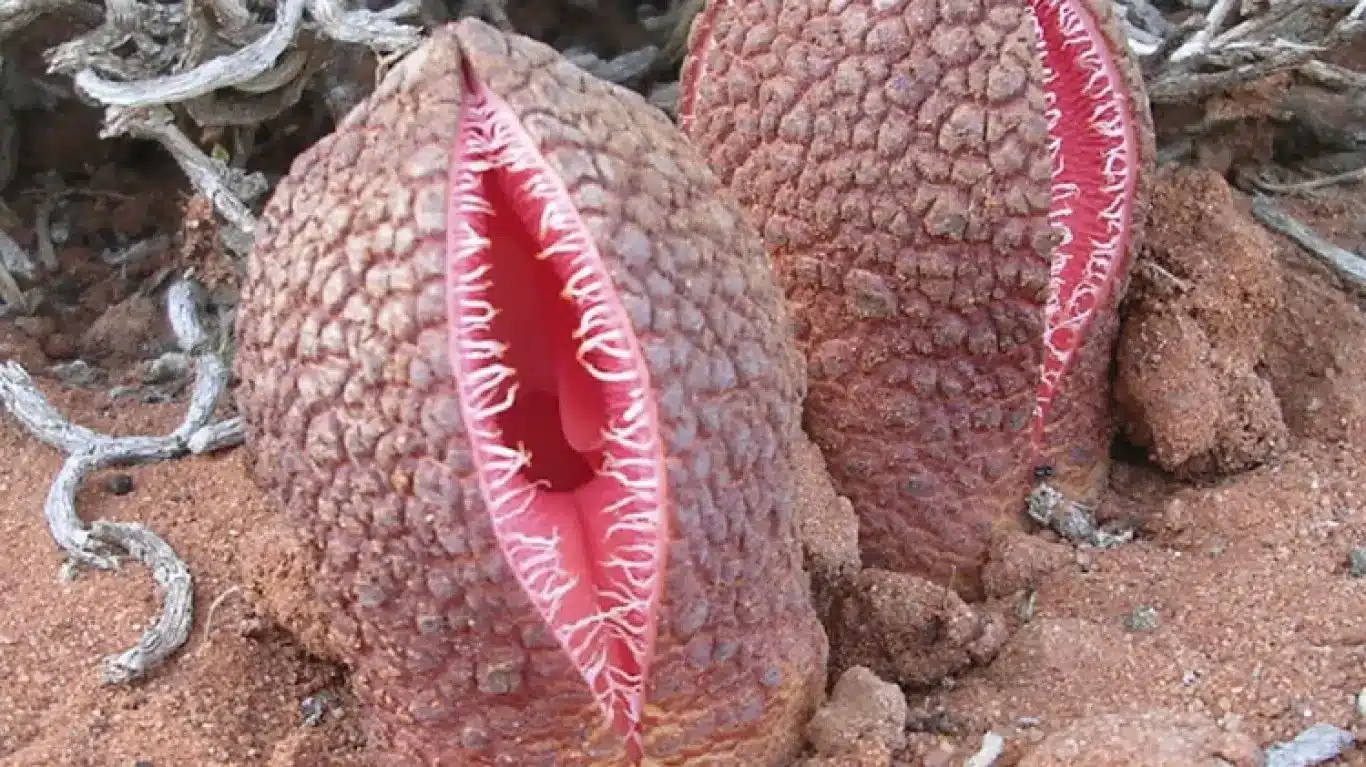
Scientifically known as Hydnora africana, this parasitic plant is native to southern Africa. Resembling a sci-fi creature, it attaches to other plants’ roots, staying mostly underground except for its flower. Emitting a feces-like odor, it lures beetles without harming them, releasing them once its flower matures.
2. Purple pitcher plant
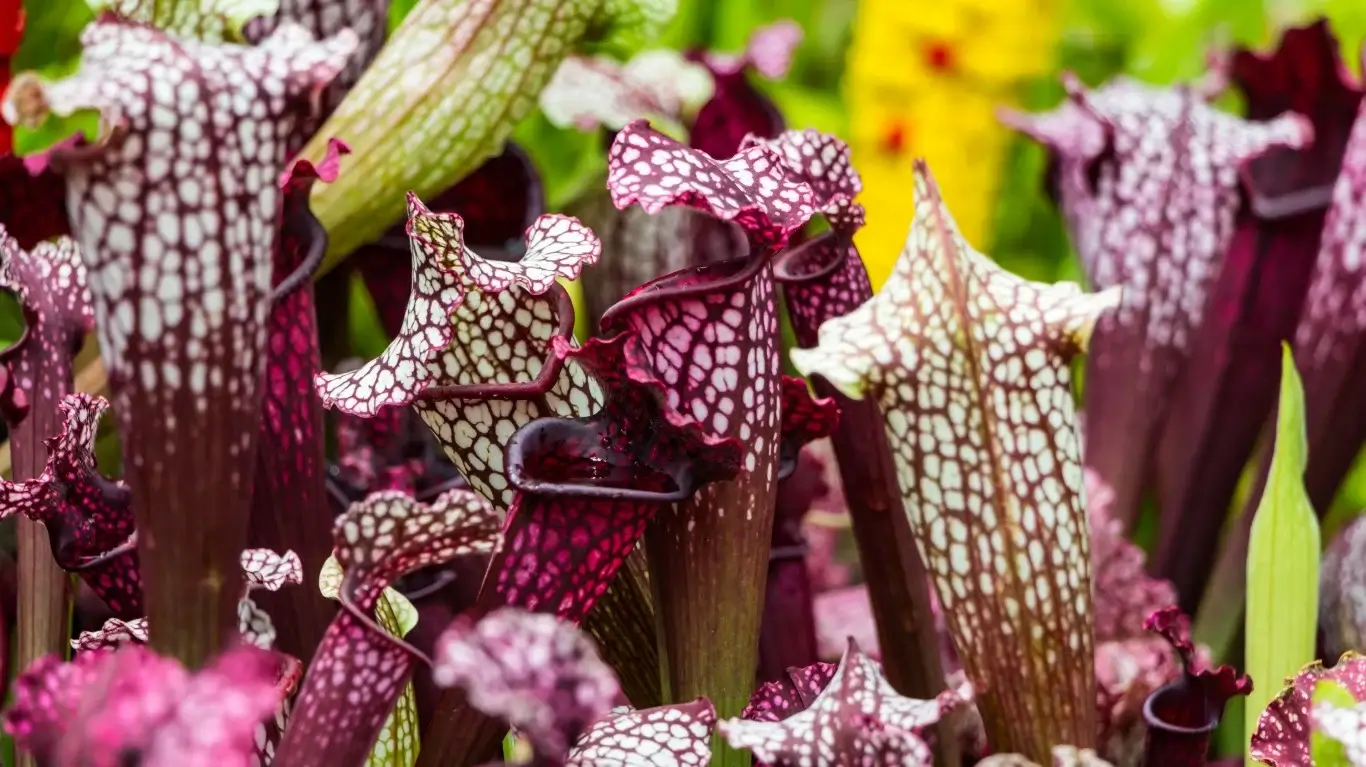
Scientifically known as Sarracenia purpurea, the purple pitcher plant is a carnivorous species thriving in Canada, Alaska, and U.S. regions like the Great Lakes and Gulf Coast. Despite Canada’s unexpected habitat, 18 carnivorous plant species, including this one, call it home. The plant traps insects with downward-tilted hairs, leading them to drown in water within and become the plant’s sustenance.
3. Parachute flower
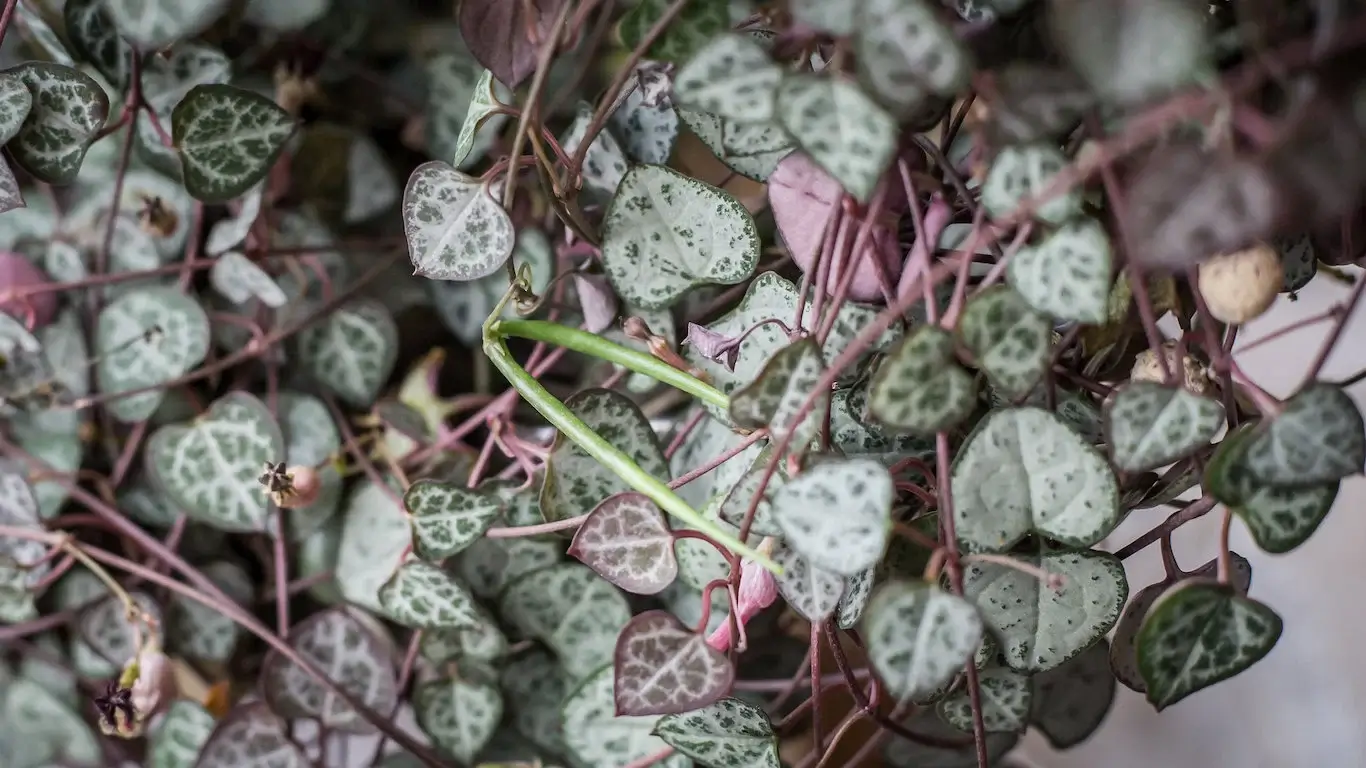
Scientifically known as Ceropegia woodii, this parachute flower hails from Southern Africa and features a peculiar hair-flecked tongue-like center. It lures insects with its scent, trapping them temporarily. As the plant’s hairs wither, the insects escape, now carrying the flower’s pollen. Native to Southern Africa.
4. Hammer orchid

Scientifically named Drakaea glyptodon, this endangered orchid, also called the King-in-his-Carriage, inhabits damp, sandy soil and swamps in Western Australia. Emitting pheromones to attract male wasps, the orchid cleverly facilitates pollination as the wasps mistake it for a female. Sporting a distinctive heart-shaped leaf with pale and dark green patterns, the hammer orchid is a unique species.
5. Suicide palm
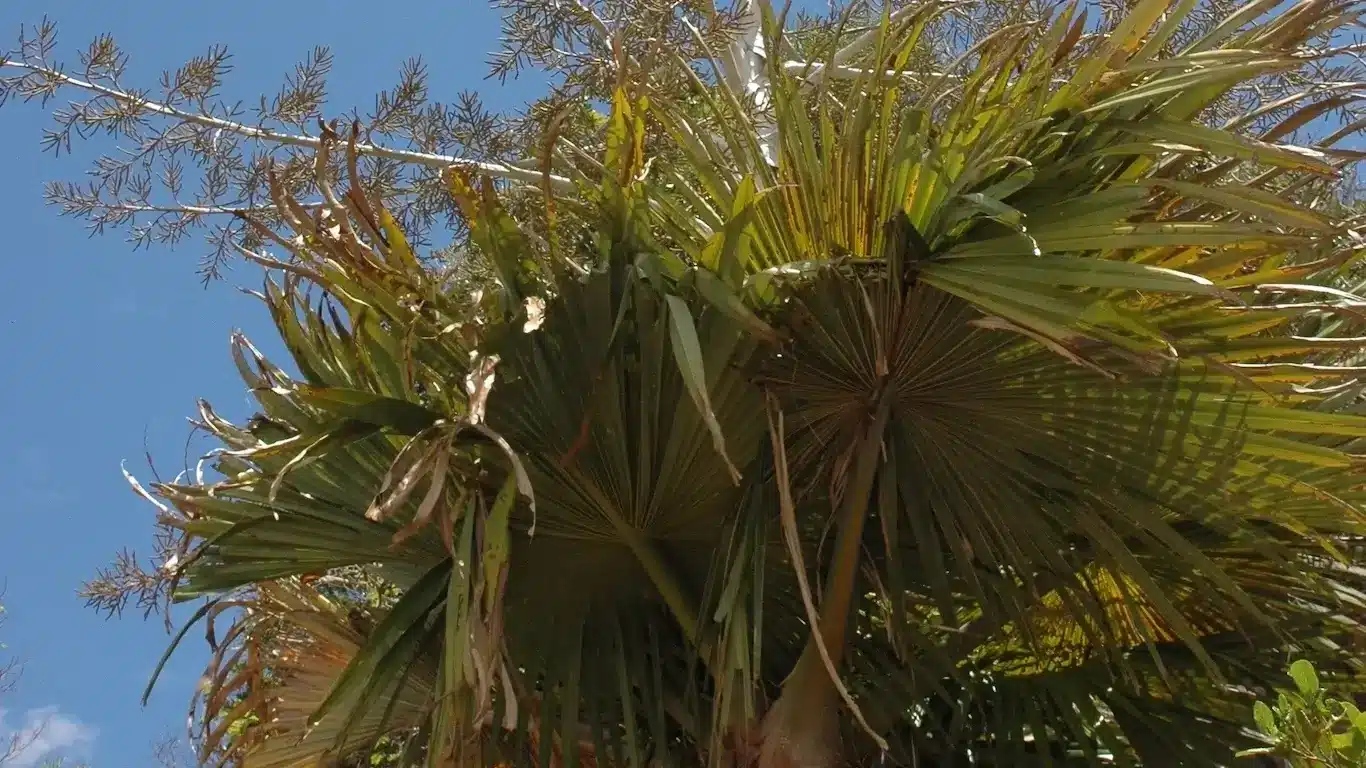
Suicide palm, scientifically known as Tahina spectabilis, was discovered in Madagascar in 2005 by Xavier Metz. Growing up to 60 feet with 16-foot leaves, it lives for 50 years, and only 90 exist in the wild. The plant earns its name from a unique end-of-life spectacle where its stem tips explode in a burst of tiny flowers, attracting pollinators. However, this display exhausts the plant, leading to its demise due to nutrient depletion.
6. Strangler fig

Scientifically known as Ficus, this parasitic nightmare, the strangler fig, thrives in Australia. It encircles its host, robbing nutrients when growing downward and blocking sunlight when growing upward, outlasting the host tree by years.
7. Welwitschia mirabilis

Welwitschia mirabilis thrives in the Namib Desert, featuring two large leaves on a short trunk, reaching about 2 feet in height. Remarkably, some specimens endure for up to 2,000 years.
8. Sensitive plant
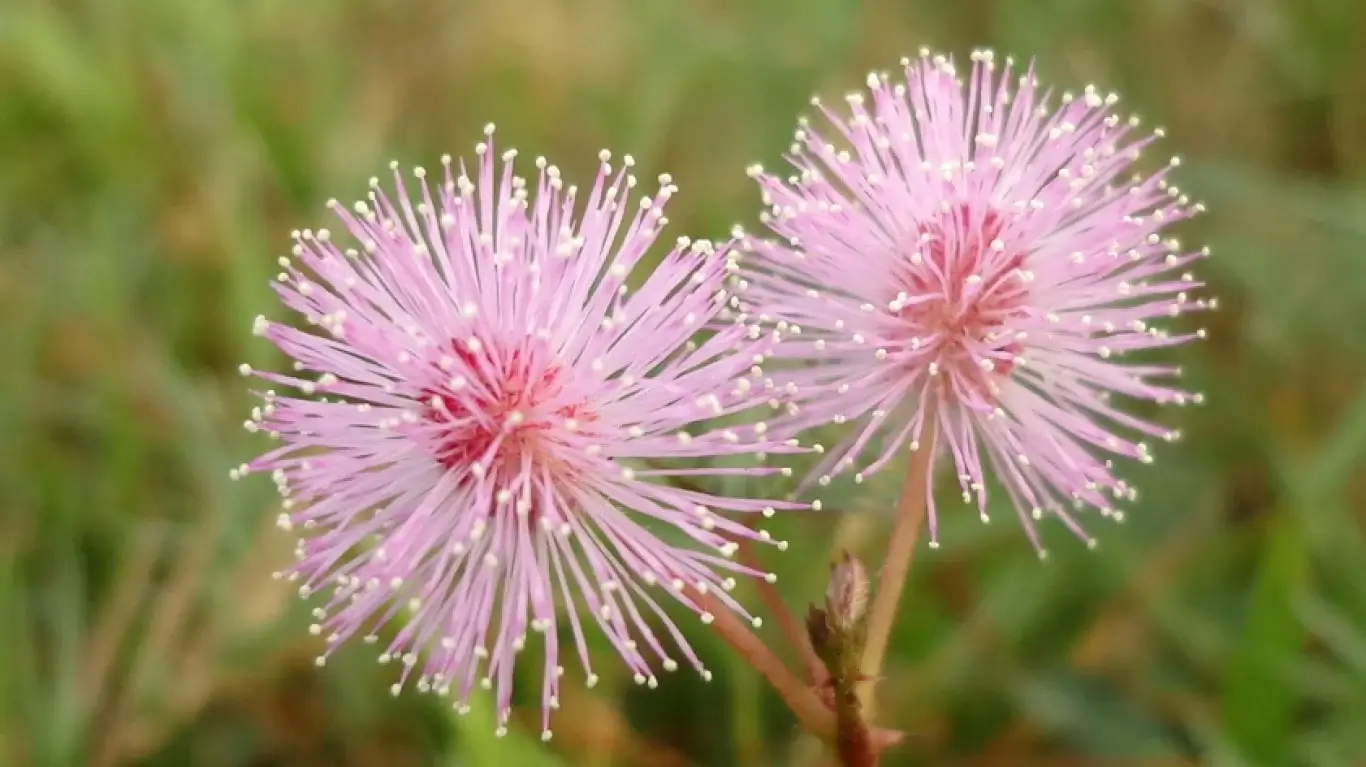
Known scientifically as Mimosa pudica, the sensitive plant hails from South and Central America. Recognized by its pink blossoms and fern-like leaves, it exhibits a unique defense mechanism—when touched, the leaves fold up defensively due to chemical secretions that force water out of its cells. Scientists attribute this behavior to an evolutionary adaptation aimed at deterring predators.
9. Corpse flower

Scientifically known as Amorphophallus titanum, the corpse flower thrives in Western Sumatra. Renowned as the world’s largest flower, it emits a foul odor resembling rotting flesh to attract pollinators in the tropical forests of Sumatra.
10. The scale tree

Scientifically named Lepidodendrons, these trees, also known as scale trees, thrived in prehistoric swamp areas during the Carboniferous Period, approximately 359 to 299 million years ago. Reaching 130 feet in height and reproducing via spores, they were dominant due to elevated oxygen levels. Resembling contemporary club mosses, these unusual plants vanished during the Mesozoic era, likely due to climate changes.
11. Water caltrop

Scientifically known as Trapa natans, the water caltrop is native to Eurasia and Africa. Also called water chestnuts, it’s known by various names like buffalo nut and devil pod. Used in China for millennia, this aquatic plant is considered near-threatened in places like Germany.
12. Death apple tree

Scientifically known as Hippomane mancinella, the death apple tree thrives in the Caribbean and Florida. The “tree of death” in Spanish holds the title of the world’s most dangerous tree in the Guinness Book of World Records. Native to tropical regions of North and Central America, the Caribbean, and parts of South America, this perilous plant releases a burning sap, causing serious injuries. Ingesting its fruit can be fatal, and attempting to burn it poses risks of blindness from the smoke.
13. Dancing plant

Scientifically known as Desmodium gyrans, this dancing plant thrives in Southeast Asia. Also called the telegraph or semaphore plant, it reacts to sunlight and vibrations, even responding to music. Charles Darwin, the English naturalist, admired this plant and featured it in his book “The Power of Movement in Plants.”
14. Black bat flower or devil flower
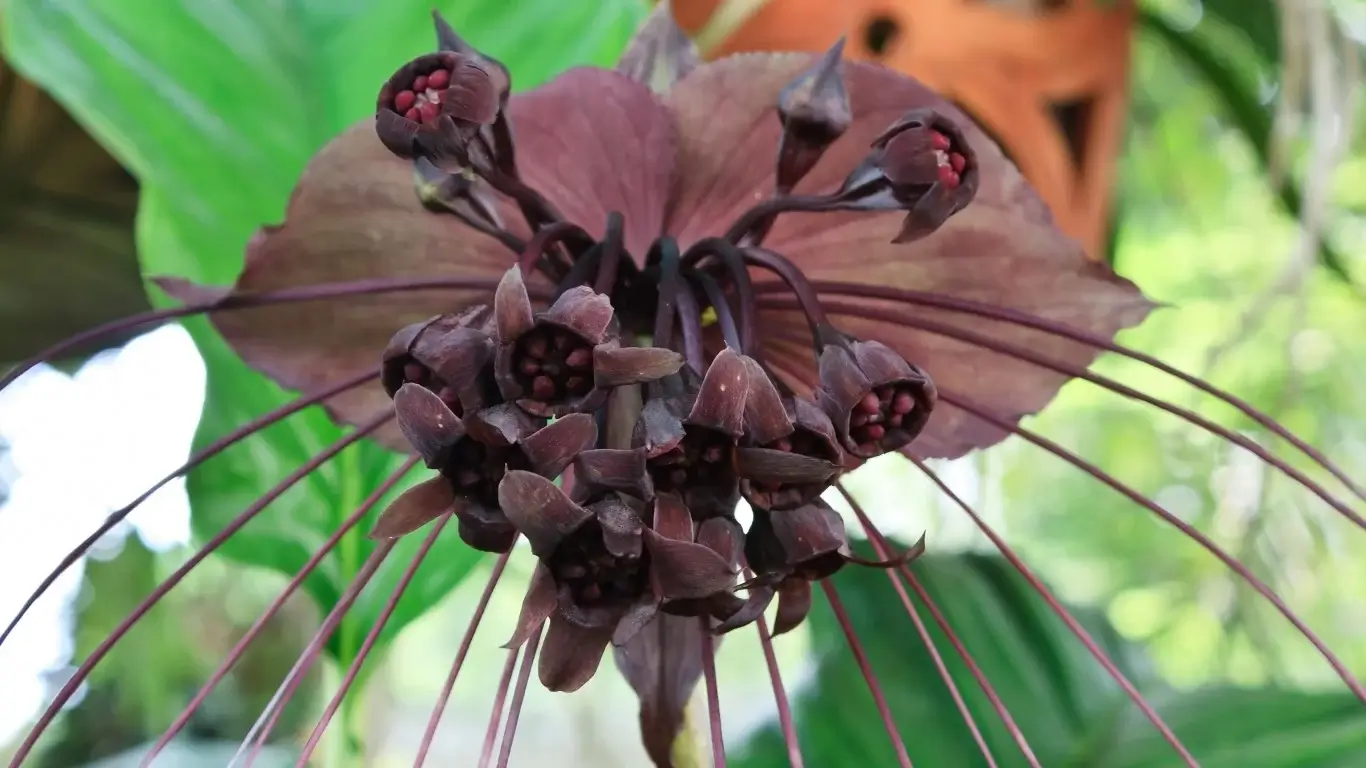
Scientifically known as Tacca Chantrieri, this plant thrives in West Africa and Southeast Asia, featuring up to 25 eerie bat wing-like black flowers, heavy berries, and 24-inch long “whiskers” attached to the flowers.
15. Rafflesia

The Rafflesia, scientifically known as Rafflesia arnoldii, thrives in Indonesia. It’s a “corpse flower” due to its foul odor. Discovered by Sir Stamford Raffles and Dr. James Arnold, this unique plant lacks stems, leaves, or roots. Operating as a parasite on tropical rainforest vines, it transforms into an alarmingly large flower, weighing up to 24 pounds and blooming for seven days.
16. Strychnos electri

Scientifically named Strychnos electri, this fossilized plant was found in Dominican Republic amber by Oregon State University’s George Poinar in 1986. Identified by Rutgers University Professor Lena Struwe, it belongs to the strychnos genus. Named after the Greek word for amber, elektron, these plants contain strychnine, an alkaloid present in pesticides. Dating between 15 million and 45 million years ago, it’s the first neotropical plant preserved in amber.
17. Grandidier’s baobab

Adansonia grandidieri, commonly known as Grandidier’s baobab, is the most impressive among eight baobab species. Endangered due to slash-and-burn farming and overgrazing, this tree thrives in arid regions of Madagascar. Named after the 19th-century French naturalist Alfred Grandidier, it reaches 82 feet in height with a 10-foot-wide trunk, and its bark is highly valued for its medicinal properties.
18. Cape Sundew
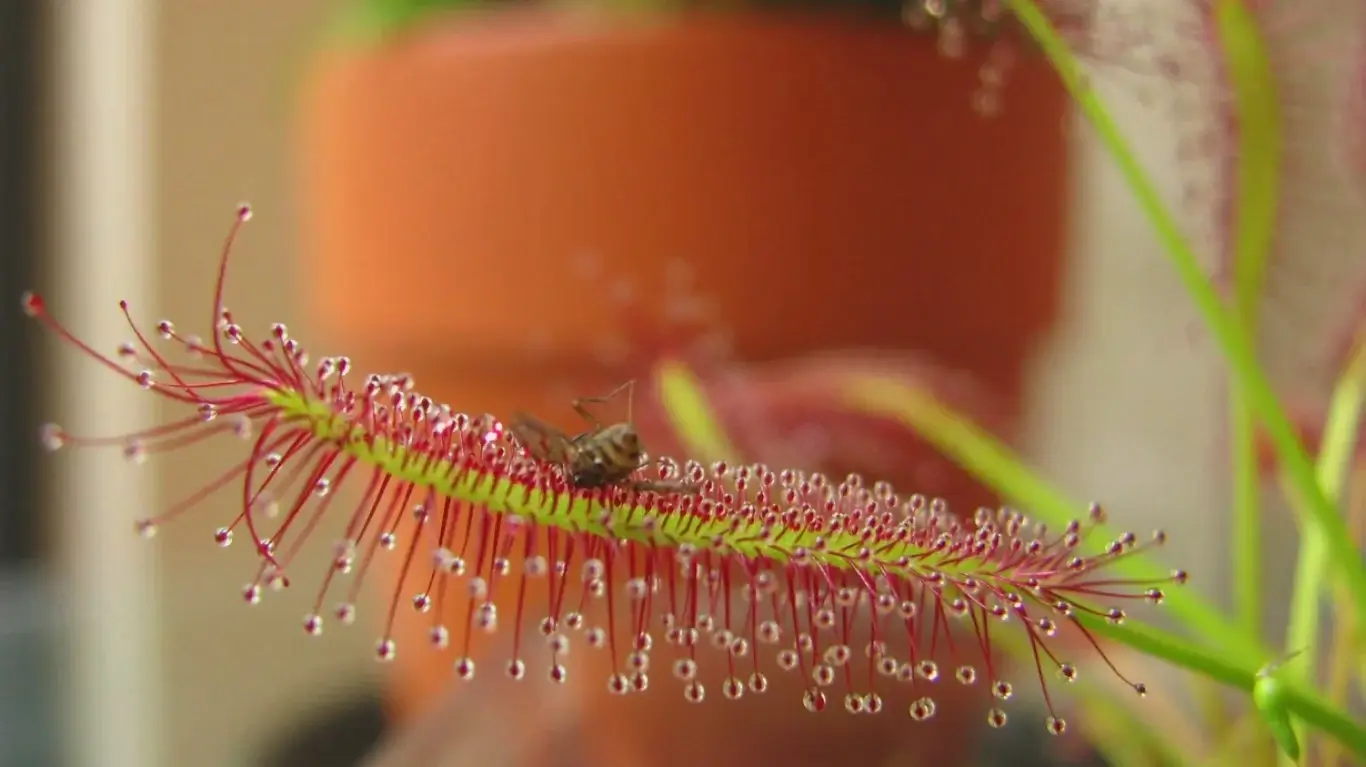
Scientifically known as Drosera capensis, this carnivorous plant hailing from South Africa resembles ribbon candy. It traps insects in sap-soaked leaves, adapting well to various temperatures. Classified as an invasive species, it has spread to New Zealand.
19. Flypaper plant

Scientifically known as Pinguicula gigantea, this carnivorous butterwort hails from Mexico. Its green, translucent leaves ensnare and devour prey like mosquitoes and gnats, showcasing a deceptive beauty.
20. Rat-eating pitcher plant

Scientifically named Nepenthes attenboroughii, this carnivorous plant, discovered in 2007 in the Philippines, is renowned for being one of the world’s largest meat-eating plants. Its 4-foot-tall pitcher lures and traps rats with nectar, dissolving them with acid-like juices. Named after Sir David Attenborough, it’s among the newest and weirdest discoveries.
21. Porcupine tomato

Scientifically named Solanum pyracanthos, the porcupine tomato, with large orange thorns, thrives in Madagascar and western Indian Ocean islands. Growing up to 5 feet, this weed poses a threat to humans due to its toxic nature.
22. Victoria water lily

Scientifically known as Victoria Amazonica, this water lily thrives in the Amazon region. With leaves expanding up to 6 feet wide, the plant safeguards itself with thorny undersides, deterring consumption. The Victoria water lily’s night-blooming flowers endure for two to three days.
23. Dead horse arum lily

Scientifically known as Helicodiceros muscivorus, this Corsican and Mediterranean plant, the dead horse arum lily, emits a rotting meat scent to attract insects. It traps them on the first night of flowering, covering them in pollen. The plant is thermogenic, generating its heat to intensify the odor.
24. Dragon’s blood tree

Scientifically known as Dracaena cinnabari, the Dragon’s Blood tree hails from Socotra, near Yemen. Resembling a palm, it features 2-foot-long leaves and produces a dark resin known as “dragon’s blood,” historically used for medicine and dyes. Vulnerable due to climate change, the tree’s umbrella shape marks a unique presence on the island.
25. Doll’s eye

Doll’s Eye (Actaea pachypoda), native to Eastern North America, features 2-foot tall plants with white berries resembling doll’s eyes, complete with black “pupils.” Despite its charming appearance and deep pink stems, the plant, also known as white baneberry, is poisonous, including its leaves and stalk. The term “bane” is used by botanists to denote toxic plants.
26. Rootless duckweed

Scientifically known as Wolffia arrhiza, this rootless duckweed, the world’s tiniest flowering plant at approximately 1/32nd of an inch, is native to Europe, Africa, and parts of Asia. Thriving in ponds and water sources, researchers at the University of Jena in Germany see it as a potential protein source due to its apparent palatability.
27. Golf ball

Scientifically known as Mammillaria herrerae, this cactus hails from central Mexico’s mountains. Resembling a golf ball, it boasts spines for sun protection, sprouts pink flowers, and is cherished by rare plant enthusiasts. Sadly, due to habitat loss from housing development, it’s critically endangered according to the International Union of Conservation of Nature.
28. Japanese umbrella pine

Scientifically named Sciadopitys verticillata, the Japanese umbrella pine thrives mainly in Japan. This ancient tree, dating back 230 million years, is a unique species with no close relatives. Revered for its rarity, it takes up to a century to reach a mature height of 30 feet. Esteemed in Japanese culture, it holds sacred significance and is linked to the Buddhist faith.
29. Jellyfish tree

Scientifically known as Medusagyne oppositifolia, the jellyfish tree is native to the Seychelles island of Mahe. Named for its fruit resembling a jellyfish, this rare plant was once believed extinct until rediscovered in 1970. With fewer than 100 remaining as of 2016, it is classified as critically endangered by the IUCN due to threats from human activity.
30. Monkey face orchid

Scientifically named Dracula simia, this orchid, resembling a monkey’s face, thrives in higher altitudes of Southeastern Ecuador and Peru. Its blooming petals emit a citrusy orange aroma throughout the year.
31. Hooker’s lips

Scientifically known as Psychotria elata, this unique flower, resembling lips, is found in Central and South America. Resembling the iconic imagery from “The Rocky Horror Picture Show,” its leaf-like structures only mimic lips briefly after opening. The plant’s distinctiveness has garnered popularity, but deforestation poses a threat to its habitat, making it increasingly rare.
32. Swaddled babies

Discovered in the late 18th century in the Andes, the Anguloa uniflora, also known as the tulip orchid, features creamy white petals, reaching about 2 feet in height and emitting a cinnamon scent.
33. Flying duck orchid

Scientifically known as Caleana major, the flying duck orchid mimics waterfowl and is native to Australia, Tasmania, Victoria, and New South Wales. With a height of 20 inches and a reddish-brown hue, it seamlessly blends into the Australian landscape. Unfortunately, it cannot thrive outside of its native habitat, relying on an indigenous Australian fungus for growth.
34. The cobra lily

Scientifically known as Darlingtonia Californica, the cobra lily thrives in Northern California and Oregon. Despite the unsuspecting appearance of a lily, this carnivorous plant resembles a menacing cobra with leaves that turn red like a snake’s tongue. It goes by various names, including calf’s head, California pitcher plant, and cobra plant. The cobra lily allures prey with a fragrant scent, capturing it in its pitcher-like trap.
35. Naked man orchid

Scientifically known as Orchis italica, this human-like orchid thrives from Morocco to Lebanon, primarily along the Mediterranean coast. Standing just over 1.5 feet tall, it exhibits light purple and pink hues, with occasional white variants. Unfortunately, like many unusual plants on this list, it faces threats, potentially due to overuse in traditional medicine.
Unusual plants aren’t limited to Asia and Africa. Their unique features, from carnivorous diets to unconventional pollination, challenge common plant perceptions.
